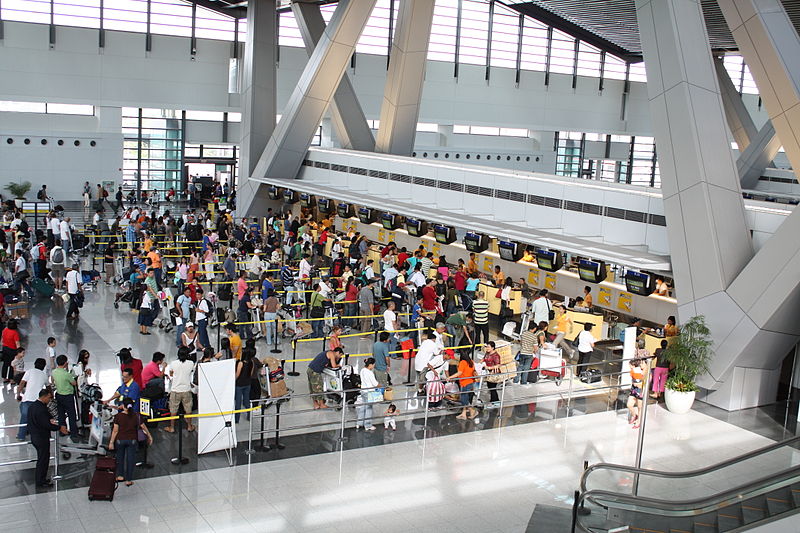Airline passengers tipped to double by 2035
18 October, 2016
5 min read


Passengers who think airports are crowded now should brace themselves to deal with twice as many people by 2035.
The International Air Transport Association is predicting passenger numbers will almost double from 3.8 billion this year to 7.2 billion in 2035 based on an annual compound average growth rate of 3.7 percent.
But it warned of long delays for passengers and flights unless air transport stakeholders work together to improve infrastructure.
The airline industry group also cautioned a strengthening of the current trend towards trade protectionism could cut growth to 5.8 billion, affecting aviation jobs and the global economy, as barriers slow growth to an annual compound growth rate of 2.5 percent.
"Economic growth is the only durable solution for the world’s current economic woes, '' IATA director general Alexandre De Juniac told the World Passenger Symposium in Dubai on Tuesday. "Yet we see governments raising barriers to trade rather than making it easier. If this continues in the long-term, it will mean slower growth and the world will be poorer for it
Based on the 3.7 percent growth figure, IATA forecasts the Asia-Pacific region will be the biggest growth driver with China tipped to provide 817 million new passengers annually in 2035 and displace the US as the world’s biggest aviation market.
The US will gain an additional 484 million passengers to retain second place while India, with an additional 322 million passengers, will replace the UK in third place.
Indonesia and Vietnam are also forecast to grow quickly to round out the top five with 135 million and 112 million new passengers, respectively.
Routes to, from and within the Asia-Pacific will grow at 4.7 per cent to see an extra 1.8 billion passengers a year in two decades’ time to bring the overall market size to 3.1 billion.
North American growth of 2.8 per cent annually will see 1.3 billion passengers travelling each year, up by 536 million, while Europe will record the slowest growth rate of 2.5 per cent to add 570 million passengers and hit 1.5 billion travellers annually by 2035.
The Middle east will continue to grow strongly at 5 per cent per year to add 238 million passengers annually by 2035 and bring to total market size to 414 million passengers. The United Arab Emirates will top the region’s growth at 6.3 per cent a year.
Africa is also expected to see strong growth of 5.1 per cent annually for a total market of 303 million passengers while Latin American markets will grow by 3.8 per cent annually to 658 million passengers.
IATA has a roadmap to handle the growth called the Simplifying Business Program which includes initiatives to make airport and security checkpoints more efficient, provide customers with better real-time information and improve the way tickets are issued and itineraries recorded.
Part of this is proposal called One Identity, which would mean passengers would need to prove their identity just once and eliminate the need for repeated ID checks.
But whether the aviation industry and governments are capable of coping with the massive growth remains to be seen.
De Juniac called for players in the air transport industry to work together to embrace “speed, innovation to meet the challenges of growth and rising passenger expectations’’.
But he warned of problems with airport and airspace capacity, citing rising congestion in Europe and potential issues in the Gulf region and China.
“I fear we may be headed for an infrastructure crisis that will impact air travellers,’’ he said. “Inadequate infrastructure negatively impacts the passenger experience in the form of flight delays, longer routes and inefficient schedules.
“Then there is the cost to economies of lost business opportunities, employment and social development. Remember aviation is a critical catalyst for economic and social development, supporting 63 million jobs and some $2.7 trillion in economic impact.”
IATA also released a survey of almost 7000 passengers which showed travellers wanted to do more of the traditional check-in processes before they arrive at airport and more than 70 percent now using online facilities.
A big number wanted to travel to the airport luggage free, with 26 per cent wanting their luggage picked up at home and 24 per cent wanting to drop off their bags “off airport’’.
Security and border control processes were seen as the biggest “pain points’’ and passengers were also keen to pass through security without having to remove personal items. Four out of 10 chose their route based on their airport transfer experience.
The survey found in-flight wi-fi had gained in popularity and more than half of passengers wanted to connect during their journey, up 12 per cent on 2015.
Some 85 per cent also said they were prepared to share personal data to allow airlines and airports to offer them a more customised travel experience.
Next Article
Qantas triples profit but misses mark

Get the latest news and updates straight to your inbox
No spam, no hassle, no fuss, just airline news direct to you.
By joining our newsletter, you agree to our Privacy Policy
Find us on social media
Comments
No comments yet, be the first to write one.
